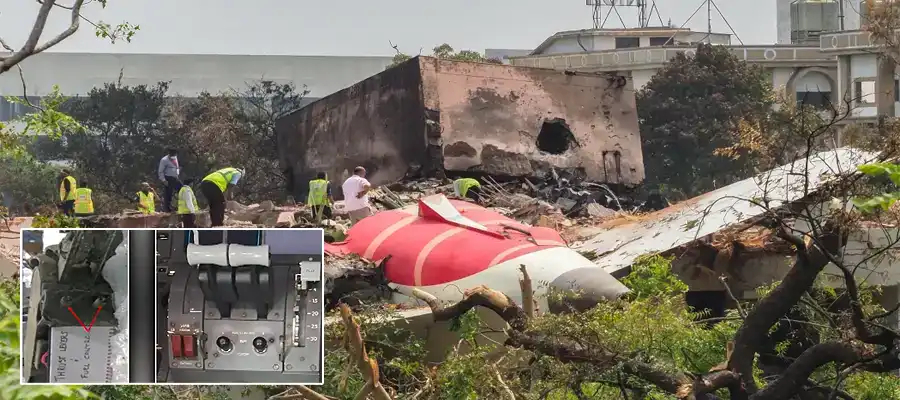Ahmedabad to London Air India Flight Crash is said to be the world's deadliest aviation accident in a decade. At least 260 people died when a London-bound Air India Boeing 787 Dreamliner crashed moments after takeoff. Multiple global investigative forums extended their help to probe the horrific Air India accident.
Now, the Aircraft Accident Investigation Bureau (AAIB) has submitted its report on the Ahmedabad Flight Crash Reason based on its initial investigation. AAIB has prepared its report based on preliminary facts and evidence collected during the investigation. AAIB has stated that the information is preliminary and hence subject to change.
What led to the Air India plane crash?
AAIB in its report found out that after takeoff from Ahmedabad (Runway 23), the aircraft reached a max recorded airspeed of 180 knots at 08:08:42 UTC. Immediately afterward, both Engine 1 and Engine 2 fuel cutoff switches transitioned from RUN to CUTOFF, one after the other, with a time gap of just one second. As a result, N1 and N2 RPMs of both engines began to fall, indicating complete engine flameout.
Pilots' communications before the crash were accessed
The investigation quoted Cockpit Voice Recorder (CVR). CVR recording's revealed- One pilot asked, "Why did you cut off?"
The other pilot replied, "I didn’t do it."
This exchange suggests a possible uncommanded shutdown or unintended human-machine interface anomaly with the fuel control switches.
CCTV footage accessed by the agency showed RAT deploying shortly after lift-off, which generally indicates loss of both engine power or main electrical systems. EAFR (Enhanced Airborne Flight Recorder) confirmed RAT hydraulic pump was supplying power by 08:08:47 UTC.
Therefore, it can be said that as per the investigation data. both engines lost power just seconds after takeoff due to the cutoff of fuel supply. Furthermore. the fuel cutoff was not intentionally commanded by either pilot, as per the CVR.
How can an engine cut off from fuel supply without the Pilot switching it off?
Since CVR has showcased that the pilots did not manually switch off the fuel supply, the onus is now on Boeing. The fuel control switches are protected by a locking mechanism to prevent accidental cutoff.
Notably, in 2018, the SAIB (Special Airworthiness Information Bulletin) issued by the FAA in 2018 warned of the potential disengagement of these locks on some Boeing aircraft. Notably, the same switch model is used in the B787, including part number 4TL837-3D used in VT-ANB. This raises the possibility that the switches may have been prone to unintended movement due to mechanical failure or vibration during takeoff.
Was it a manual fault?
An Air Expert named Captain CS Randhawa in an interview with Republic said, "You see, first and foremost I would like to tell you that the fuel control switches, firstly, they're gated. And they have guards on the side. The second part is that the switch, the fuel control switch, has to be pulled out and then put it to run."
Similarly, if it has to be cut off, it has to be pulled up and then put it down to shut off. Now, this switch cannot be operated externally. It has to be done internally by a human interface.
Notably, the report notes that the throttles were in idle and the fuel control switches were at ‘RUN’, indicating that everything was normal before the sudden shutdown.
In conclusion, readers are advised to wait till the final report is submitted by AAIB.
